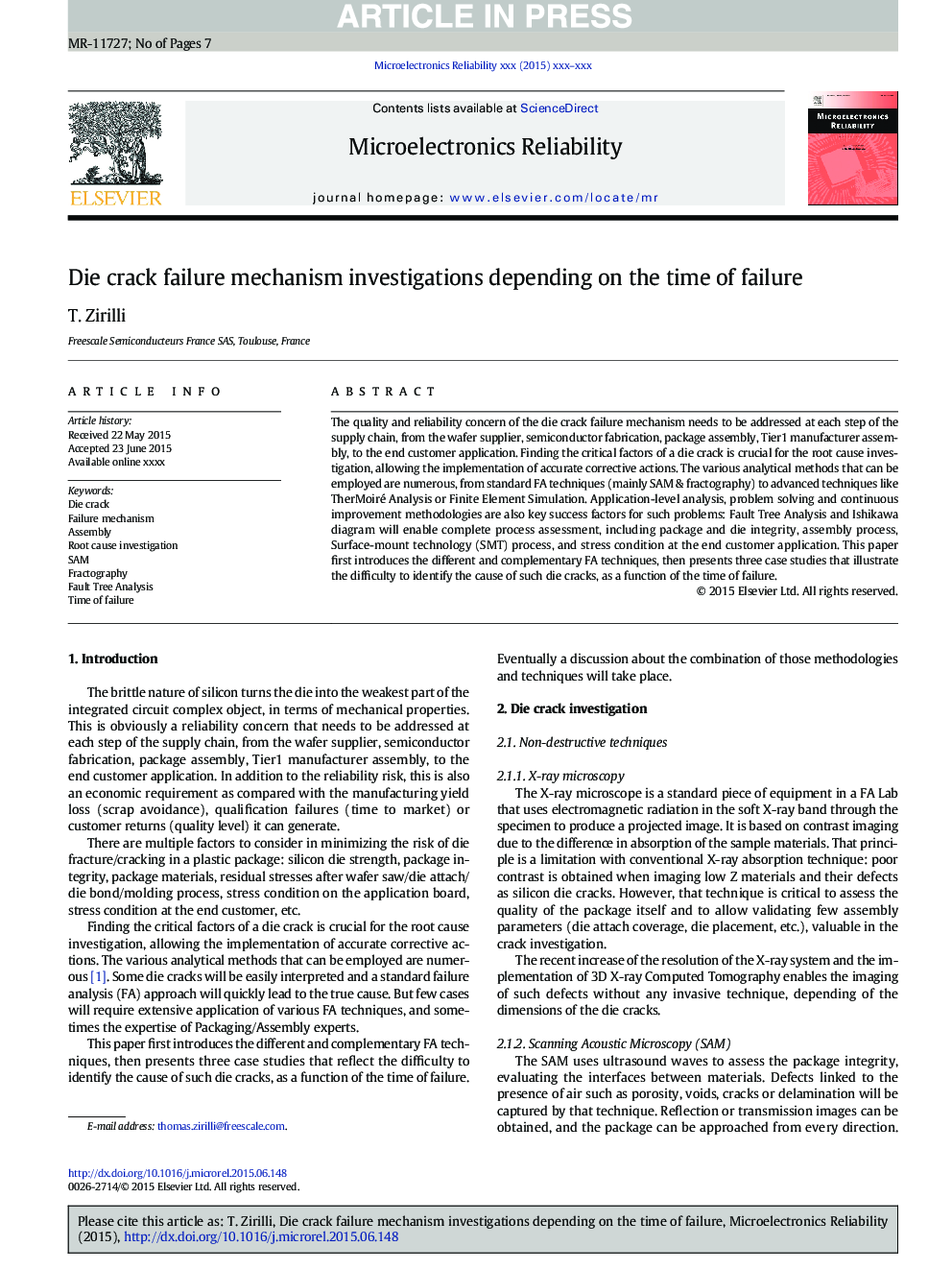| Article ID | Journal | Published Year | Pages | File Type |
|---|---|---|---|---|
| 6946665 | Microelectronics Reliability | 2015 | 7 Pages |
Abstract
The quality and reliability concern of the die crack failure mechanism needs to be addressed at each step of the supply chain, from the wafer supplier, semiconductor fabrication, package assembly, Tier1 manufacturer assembly, to the end customer application. Finding the critical factors of a die crack is crucial for the root cause investigation, allowing the implementation of accurate corrective actions. The various analytical methods that can be employed are numerous, from standard FA techniques (mainly SAM & fractography) to advanced techniques like TherMoiré Analysis or Finite Element Simulation. Application-level analysis, problem solving and continuous improvement methodologies are also key success factors for such problems: Fault Tree Analysis and Ishikawa diagram will enable complete process assessment, including package and die integrity, assembly process, Surface-mount technology (SMT) process, and stress condition at the end customer application. This paper first introduces the different and complementary FA techniques, then presents three case studies that illustrate the difficulty to identify the cause of such die cracks, as a function of the time of failure.
Related Topics
Physical Sciences and Engineering
Computer Science
Hardware and Architecture
Authors
T. Zirilli,
